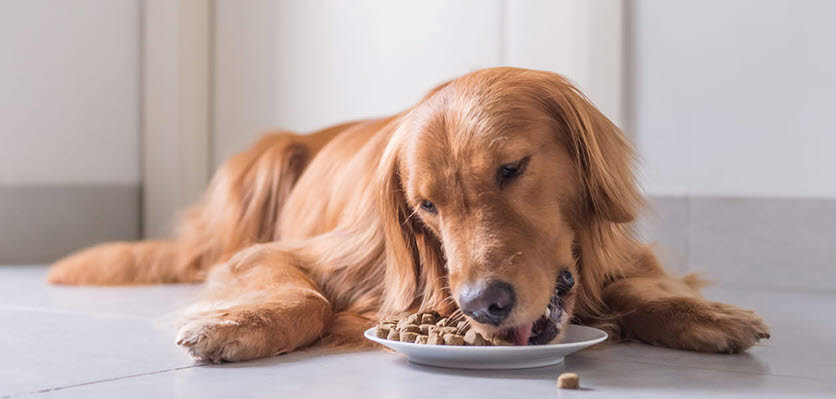How to stop your pet from overeating

Obesity is a common problem in companion animals. Unfortunately, being overweight increases your pet’s risk of a number of health issues that are caused or worsened by obesity, including:
- Heart disease
- Respiratory disease
- Diabetes (in cats)
- Arthritis
- Pancreatitis
- Heat stress
- Fatty liver
- Joint injuries e.g. cruciate injury
- Spinal disc disease
If you think your pet may be overweight, the first step is to book a consultation with your veterinarian. Your vet will check your animal to confirm whether they’re overweight and if so, provide an estimated target weight to aim for. They can also ensure there are no other health issues which would make it difficult for your pet to lose weight, such as an underactive thyroid gland causing slow metabolism, or any joint pain issues that would make exercise difficult.
In most cases, both diet and exercise regimes need to be altered for an overweight pet to lose weight. For dogs, this generally involves more walks, ball games or ‘doggy daycare’ play sessions. Cats benefit from two five-minute toy chase games daily, plus daily access to the outdoors using a cat leash or a cat enclosure.
However, the problem of “overeating” (i.e. your pet consuming more calories than they require) can be more difficult, especially if you’re being faced with those “sad puppy” eyes or “hungry kitty” expressions at home! It is advised to implement the following changes to reduce your pet’s calorie intake:
- Weight loss diet: Your veterinarian can advise an appropriate prescription weight loss diet for your pet. These involve measured quantities of either a low fat/high fibre diet or a high protein/low carbohydrate diet to give your pet a feeling of fullness and provide balanced nutrition. Some cats also benefit from a wet formulation diet, due to increased water content. Avoid giving your pet any other treats, as these will counteract the effects of the special diet. Once your pet has reached their target weight, consult your veterinarian regarding a long-term weight-maintenance diet, which may often allow for occasional treats!
- Smaller, more frequent meals in measured quantities: It can help your pet to feel more satisfied if you divide their daily measured food amount into two or three smaller meals, rather than a single meal per day.
- Slowing your pet’s eating: If your pet gobbles their food, slow their eating with a slow-feeder bowl or by scattering their food around on the ground for them to find. Investing in a few good puzzle-feeders (available online for both dogs and cats) can slow your pet’s eating and provide valuable mental stimulation for them at the same time.
- Increasing environmental enrichment: Whilst eating may seem like one of your pet’s favourite activities right now, there’s plenty of other ways you can have fun with them! Here are some great ways to keep your pet mentally-stimulated and happy, without the need for a daily “dégustation” menu!
With assistance from you and their vet, your pet should be able to reach and maintain a healthy lean weight, giving them the best chance at a long, happy and active life.
